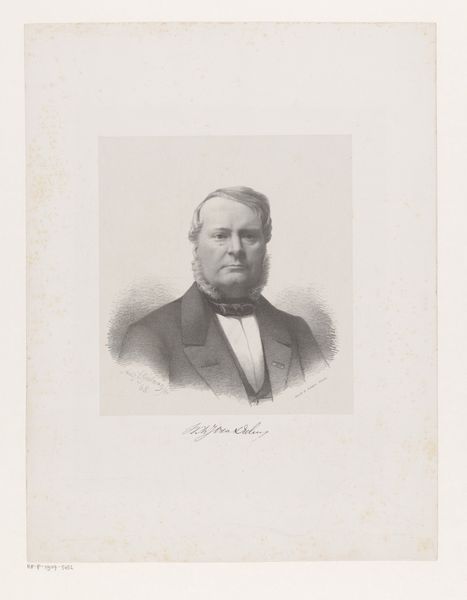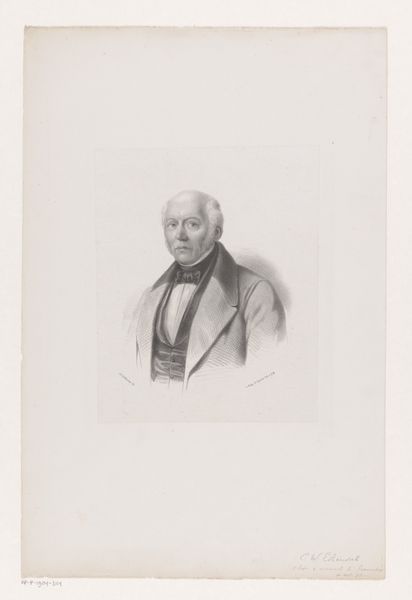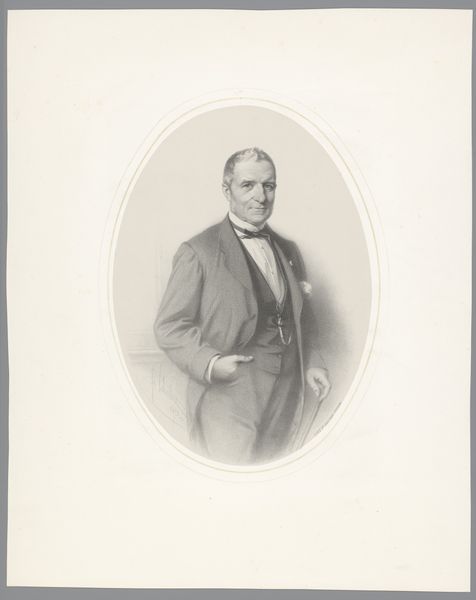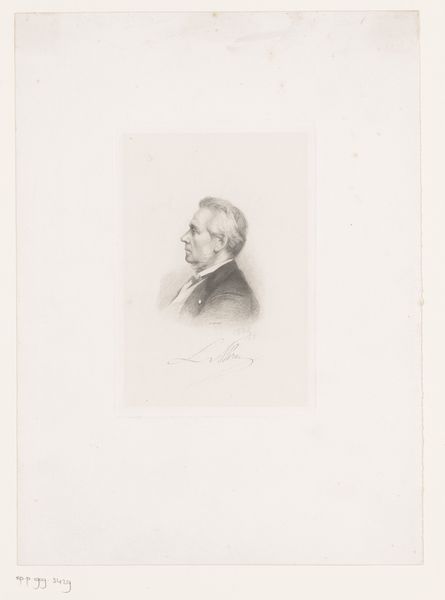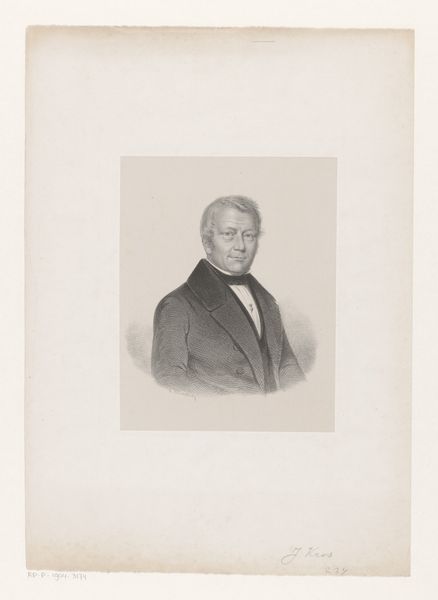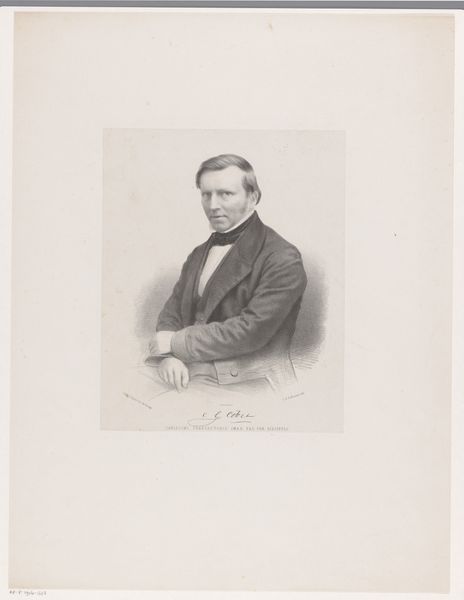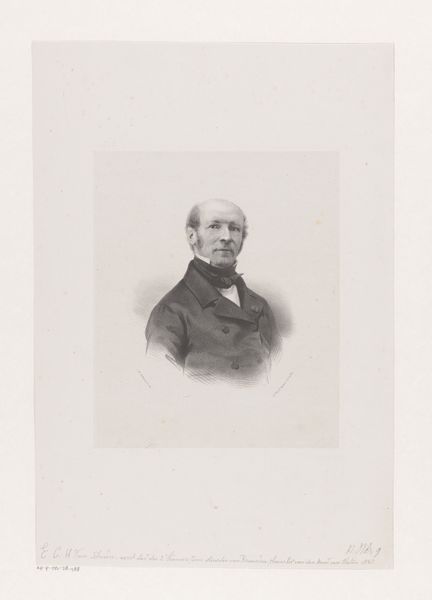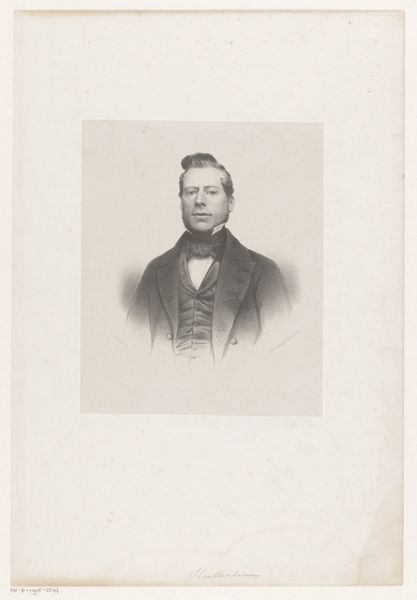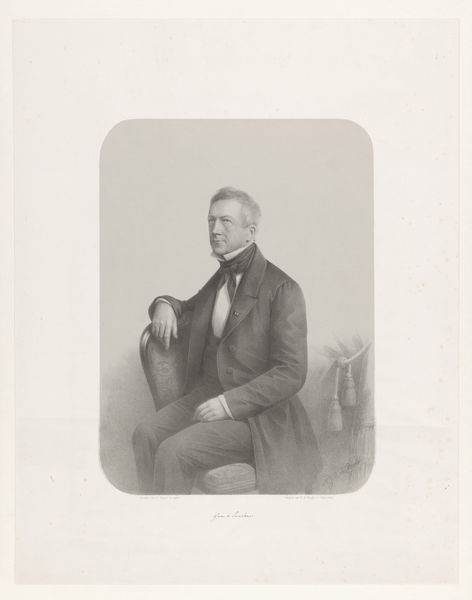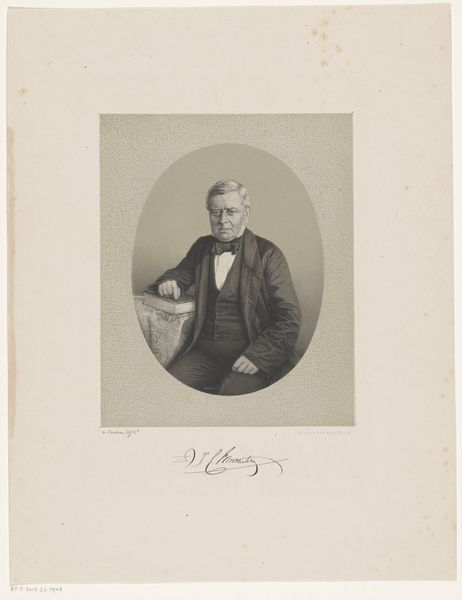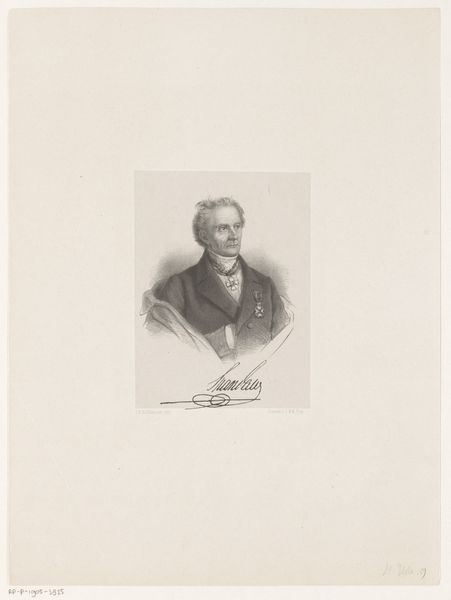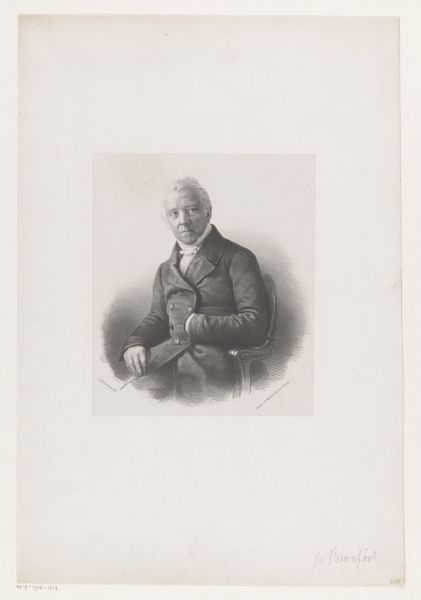
Portret van Daniël Jacob van Ewijck van Oostbroek en de Bilt 1858
0:00
0:00
antoniejohannesgroeneveldt
Rijksmuseum
print, etching
#
portrait
#
16_19th-century
# print
#
etching
#
realism
Dimensions: height 335 mm, width 250 mm
Copyright: Rijks Museum: Open Domain
Curator: What a striking portrait. Antonie Johannes Groeneveldt created this etching in 1858, titled "Portret van Daniël Jacob van Ewijck van Oostbroek en de Bilt." Editor: He seems imposing, doesn't he? The high collar and the serious expression, there's a definite sense of authority emanating from this print. Curator: It captures the Dutch 19th century's penchant for realism in portraiture. The lines are very fine, contributing to a detailed likeness. Think about the social conditions that cultivated such precise representation of public figures. Editor: Precisely! This image, reproduced as a print, implies circulation within particular socio-political circles. I am curious about the politics and positions held by van Ewijck at the time. His confident posture and precise features subtly bolster and reaffirm conventional power structures. Who was his audience? Curator: Historical records suggest he held significant political roles in Oostbroek en de Bilt during that era, clarifying the purpose behind commemorating him in such a manner. These portraits often functioned as public declarations of power and legacy. Editor: Legacy certainly plays a key role. Do you find that the monochrome of the etching influences your understanding of the figure at all? For me, its starkness is so definitive and contrasts markedly from the possibilities presented by color. It accentuates the rigid structures he inhabits. Curator: It definitely contributes to the gravity of the image. As prints circulated among broader segments of society, they propagated ideals associated with leadership during the nineteenth century. Editor: This artwork invites us to reflect on portraiture’s evolving purpose. Today, we're awash in portraiture, but that comes with new dynamics of viewership and a diffusion of representation, often challenging these traditional narratives. Curator: True. The social function of an etching like this contrasts sharply with the portraiture we encounter today. Editor: Reflecting on van Ewijck and Groeneveldt’s work makes me acutely aware of how representational power circulates. Curator: I’m left wondering what Daniël Jacob van Ewijck van Oostbroek en de Bilt himself would think of our conversation.
Comments
No comments
Be the first to comment and join the conversation on the ultimate creative platform.
